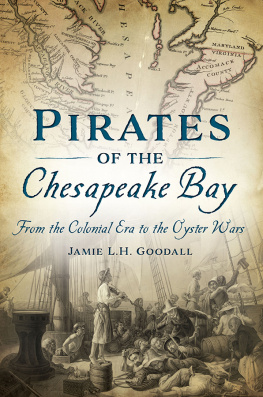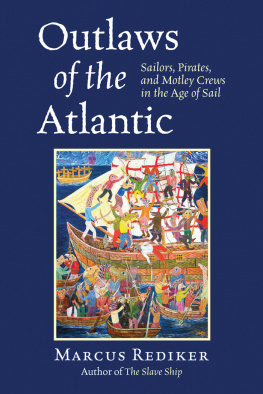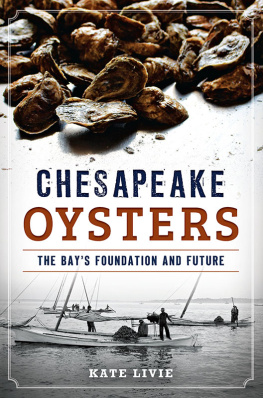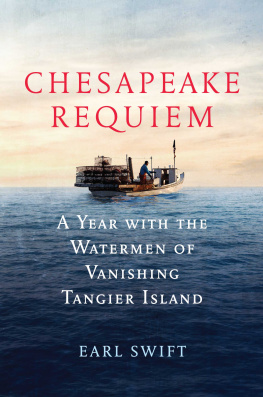

Published by The History Press
Charleston, SC 29403
www.historypress.net
Copyright 2009 by Rosemary F. Williams
All rights reserved
Front cover: Painting by Rosemary Freitas Williams. Cover photo by Charles E. Emery.
First published 2009; Second printing 2010; Third printing 2011
e-book edition 2012
Manufactured in the United States
ISBN 978.1.61423.301.5
Library of Congress Cataloging-in-Publication Data
Williams, Rosemary F.
Maritime Annapolis : a history of watermen, sails and midshipmen / Rosemary F. Williams.
p. cm.
Includes bibliographical references.
print edition ISBN 978-1-59629-659-6
1. Annapolis (Md.)--History. 2. Boats and boating--Maryland--Annapolis--History. 3. Boats and boating--Chesapeake Bay (Md. and Va.)--History. 4. United States Naval Academy--History. I. Title.
F189.A64W55 2009
975.256--dc22
2009015771
Notice: The information in this book is true and complete to the best of our knowledge. It is offered without guarantee on the part of the author or The History Press. The author and The History Press disclaim all liability in connection with the use of this book.
All rights reserved. No part of this book may be reproduced or transmitted in any form whatsoever without prior written permission from the publisher except in the case of brief quotations embodied in critical articles and reviews.
For John, through whom all things are possible.
CONTENTS
PREFACE
To clarify, I am a journalist, not a historian.
As a field journalist and executive producer, I have been fortunate enough to cover some of the bigger events in modern historythe first democratic election in South Africa, a presidential summit in Moscow, the impeachment of a sitting president, five presidential campaigns and the attacks of September 11, 2001. I have also covered a multitude of relatively small events, news that made only local headlinesa fatal fire at a North Carolina food-processing plant, many stories highlighting the goodwill of people during the holidays and some stories covering natural disasters that reinforce the fragility of life. The people and events that stay with me, the images that come to my mind from time to time, are the so-called everyday people who have done extraordinary things.
As a journalist and resident of Annapolis, the maritime history of this town has always fascinated me. Through trips to the Maryland Archives and conversations with longtime residents, I gathered glimpses of life during the heyday of harvesting oysters, Annapoliss Golden Age of Sail and the heady days of boat design and construction during the famed Trumpy Yacht era. In 2008, I had the great good fortune of being asked to install a historic timeline at the National Historic Registry property located at 222 Severn Avenue in Eastport, owned by Cardie Templeton Hannon and the Templeton family. This is where Chance Boatyard, Annapolis Yacht Yard and John Trumpy & Sons ran their historic boatyards in succession over a seventy-year period. For several months, I gathered old photos, researched the stories and talked to people who have firsthand accounts of the magnificent work done at that storied property on the Eastport peninsula of Annapolis. Many of the main players had humble beginnings. They learned their craft from their fathers, who in turn had fathers who were the first to make their livings by working on the bay. They were everyday people doing extraordinary things, and I was hooked.
This book is about the facts of maritime Annapolis as we know them today, facts culled from numerous books, articles, documents and personal interviews. I did not interpret or analyze in this bookI leave that to the impressive list of Annapolis historians who have dedicated their lives to recording the citys history. While it is not an exhaustive, unabridged study of every facet of our entire maritime history, I do hope that the stories and events I have assembled will enlighten, entertain and leave you with an appreciation of the magnificent people on the water who came before us and the events that contributed to the colorful and tightly woven fabric that is our wonderful city today.
Of the many books available on the different facets of Annapoliss maritime history, several were extraordinarily helpful in the research of this book and are worth reading for anyone interested in learning more about maritime Annapolis. These include Tobacco Coast: A Maritime History of Chesapeake Bay in the Colonial Era by Arthur Pierce Middleton; Cruising Mostly the Chesapeake by the Barrie brothers, George and Robert; Chesapeake Sails: A History of Yachting on the Bay by Richard Jud Henderson; Oyster Wars by John R. Wennersten; and The United States Naval Academy by Jack Sweetman.
I extend a heartfelt thank-you to the many people who helped with this book, including (alphabetically): Claire Ahern; Lieutenant Commander Claude Berube, USNR; Annapoliss chief preservationist, Patricia Blick; Jennifer Bodine, daughter of A. Aubrey Bodine and caretaker of his extraordinary photographs; writer, journalist and editor Janice F. Booth; Katherine Burke of the dazzling Annapolis Collection Gallery on West Street; Glenn Campbell of the Historic Foundation of Annapolis; James Cheevers, senior curator of USNA Museum; Heather Ersts, curator of the Annapolis Maritime Museum; Cardie Hannon, who provided the inspiration for this book; Fred Hecklinger; Melvin Howard, a third-generation Eastporter; Vincent Leggett; Ray and Jean Langston of Highland Beach; Pete Lesher, curator of the Chesapeake Bay Maritime Museum; Jane McWilliams; Captain Richards Miller, USN (Ret.); local historian Mike Miron, who personally recorded over 120 hours of maritime oral histories; Sarah Robertson; Jean Russo, historian of the Historic Annapolis Foundation; Bridget Shea; Susan Steckman of Annapolis Convention and Visitors Bureau; my mother, Gloria Freitas Steidinger, who taught me from a very young age to make every challenge fun, even if it kills you; Peter Tasi; Donald Trumpy; Sigrid Trumpy; Jack Schatz; Rich Williams; Spinsheet editor Molly Winans; and, most of all, my beloved husband, John P. Williams, Major, USMC (Ret.), without whom I could not have written this book. Finally, I extend my sincere gratitude to todays watermen, boat builders, sailors, marine tradesmen and graduating midshipmenmen and women who continue Annapoliss longstanding tradition of dedication to the water.
INTRODUCTION
It was still dark and near freezing on an early Thursday morning in late November 1874, and Annapoliss City Dock was the usual frenzy of activity. Oyster boats and schooners were stacked four or five deep against the bulkheads as the watermen unloaded their cargo onto the well-used wooden dock. The bulkheads had been recently repaired, but with cheap, weak wood that placed the dock in constant need of repair, perpetuating the waterfronts seedy appearance. There was a cacophony of voices of watermen and merchants, a mix of accents that included old Maryland and broken English, tinged with Irish, German, Greek and Italian. Black men and white men worked shoulder to shoulder in the no-nonsense way of the Maryland watermen. If they noticed the ice frozen on their boats and lines, the inches of frigid mud that reached past their ankles, the stench of the century-old Fish Market mixed with the citys sewer, which ran down the streets to the water, they didnt show it. Fishing, particularly oystering, was a lucrative businessa captain made four times what the average Annapolis worker made on land. It was also, however, a tough business. Many of the men, particularly the oyster dredgers, spent several days at a time on their boats fishing in the Chesapeake Bay, suffering through brutal working conditions, the scourges of Mother Nature and the often violent rivalries with other oyster boats. In Annapolis, Maryland, in 1874, it was every man for himself.
Next page












